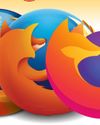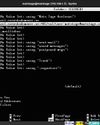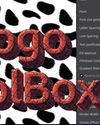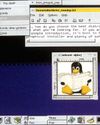
Obsidian’s website describes the app as “a second brain for you, forever”. In plain English, that means a tool that can help you take and organise a colossal number of notes in a simple way, from basic study notes to a full-blown wiki.
The program makes use of the Markdown markup language to format text, making it easy to import and export files. This simplifies tasks such as using links to jump between notes and organising large amounts of information.
Obsidian is not FOSS but the free tier fully supports Linux, doesn’t require registration and has some very powerful features. The program itself was developed by Shida Li and Erica Xu, who were unhappy with the existing note-taking software on offer.
There’s also a thriving Obsidian community (https:// obsidian.md/community) and a host of devs creating plugins to improve its rather minimalist interface.
Pick your package
Obsidian is extremely Linux-friendly, being available via Snap, Flatpak and an AppImage. Head over to https://obsidian.md/download to get started.
Ubuntu users will find it easiest just to click Linux (Snap) to download the file. Open the terminal and use cd to navigate to your Downloads folder. You can then use snap on the relevant file to install it – for example: $ snap install –dangerous –classic obsidian_1.0.3_ amd64.snap
Note that because this is a third-party Snap file, you must use the –dangerous flag. You also need to enter your admin password. Once installed, Obsidian appears in Applications.
This story is from the February 2023 edition of Linux Format.
Start your 7-day Magzter GOLD free trial to access thousands of curated premium stories, and 9,000+ magazines and newspapers.
Already a subscriber ? Sign In
This story is from the February 2023 edition of Linux Format.
Start your 7-day Magzter GOLD free trial to access thousands of curated premium stories, and 9,000+ magazines and newspapers.
Already a subscriber? Sign In

Create your first WebSocket service
Mihalis Tsoukalos explains how to use the Go programming language to work with the WebSocket protocol.

Fantastic Mr Firefox
Nick Peers takes a trip down memory lane to reveal the story behind the rise - and slight fall - of Mozilla's popular web browser.

Set up your terminal and email like it's 1983
Jump in the hot terminal time machine with Mats Tage Axelsson who emails from the command line using the latest technology.

Universal layer text effects with GIMP
Posters use them, films and presentations are hard to imagine without them: text effects. Attract attention with Karsten Günther and GIMP.

Jump to a federated social network
Nick Peers reveals how you can get up and running with this free, decentralised and non-profit alternative to Twitter.

Free our SOFTWARE!
Taking anything for granted is dangerous, so Jonni Bidwell and Mike Saunders revisit how the free software movement got started to help free us from proprietary tyranny!

Master RPI.GPIO
Les Pounder goes back to the early days of the Raspberry Pi - and his career with this classic library! -

Waveshare Zero to Pi3
Transform your Pi Zero into a Pi 3, they promised Les Pounder, but it's more like adding on go-faster stripes.

The Best OPEN SOURCE Software Ever!
In an attempt to trigger controversy, Michael Reed and Neil Mohr unequivocally state these are the greatest free software apps ever. Probably. We’re just trying to be helpful.

Linux-Mandrake 7
Simplicity and a wide range of applications make this a great distribution for all Linux users.